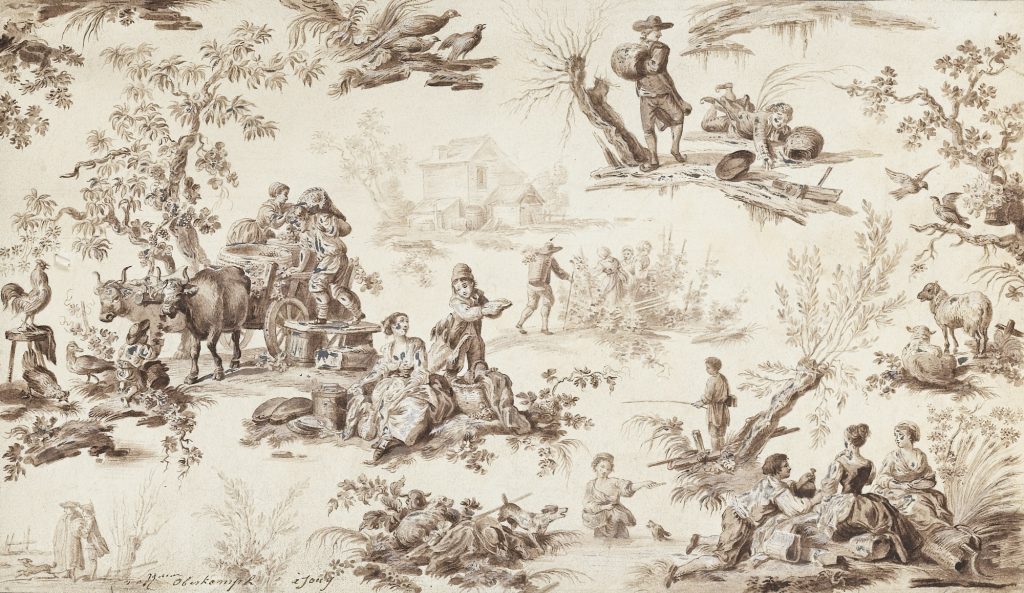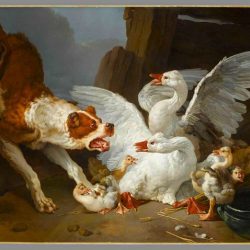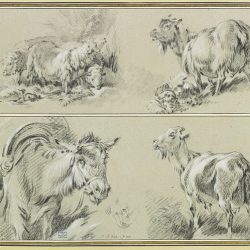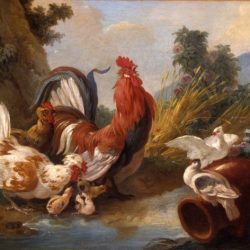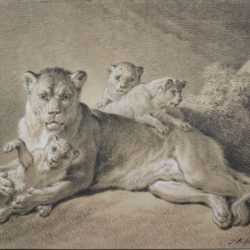Jean-Baptiste Huet
02.02.2018Jean-Baptiste Huet (1745-1811) was a late classical painter. Well known but already out of fashion during his troubled era marked by the French Revolution and Napoleonic conquests, his creative decorative style earned him a place in history, forever linking his name to toiles de Jouy.
Huet was born at the Louvre; his father was a painter of the King’s furniture. His artistic lineage; the acquaintances he made as a result of his place of birth and the renowned masters awaking his own inner qualities all pointed towards his future career as a painter. His style was influenced by François Boucher, the great exponent of the so called Rococo style at the court of Louis XVth and personal favourite of Madame de Pompadour. Jean-Baptiste Huet was approved by the Académie Royale as an animal painter and was subsequently regularly exhibited at the Paris Salon. Hi naturalistic, clear and meticulous style soon got him spotted, especially his treatment of pastoral themes and faithful representations of animals.
Huet worked as a decorator in the company of some of the best known artists of the time – Boucher and Fragonard – and on some murals (preserved at the Carnavalet Museum in Paris). But he was mainly the creator of the vignettes and cartoons for the Indian cotton textiles printed in Jouy (as well as those used in tapestry making at Beauvais). The trend back then was for country life and Huet excelled at representing rural life from a botanist’s perspective focusing on plants and flowers first, then bucolic scenes rounded off with shepherds and shepherdesses, all the things that made the toiles de Jouy such a big hit in just thirty or so illustrations that are still reproduced today. His artistry is the main reason behind the success of these drawings and certainly defines the toiles de Jouy style.
However Huet did not restrict himself to this subject matter but branched out from classical pastoral scenes to arabesques and then structured, repetitive geometric patterns in keeping with the taste for the neoclassical Antiquity movement at the tail end of the XVIIIth century prior to the saga of General Bonaparte. At the end of his career, Huet would paint creatures captured during Napoleon’s far flung military campaigns, starting off in Egypt. Because Huet remained primarily an extremely talented painter of animals. The Victoria & Albert Museum in London is home to many of the artist’s drawings which still have printing models.These days Huet is attributed for bringing a fresh twist to his decorative compositions.
The art of Jean-Baptiste Huet was a scholarly tribute to the glory of nature. But it would leave Diderot – the father of art criticism – cold and harsh in his appraisal. He loathed what he considered to be a tardy and lingering progeny of the Rococo aesthetic and reviewed the mood of the paintings hanging in the Salon as being « acrid, red, wild and barbaric » with « no illustrative workmanship ». Ironically, this view on the outmoded Huet approach could point to artistic modernity.
What’s for sure is that the vignettes produced by Huet for the production of Jouy textiles have traversed the ages and remain timeless. They may seem old fashioned in their depiction of a peasant world that has long since gone, but the precise craftsmanship and entertaining sketches brought scenes to life in just a few strokes and the harmony of the world that they evoke still pack a punch to this day.
- Jean-Baptiste Huet (1745-1811) – Un dogue se jetant sur des oies, 1768-1769 (© RMN Grand Palais).
- Jean-Baptiste Huet (1745-1811) – Trois moutons, une chevre, un âne et reprise de son museau (Collection privée)
- Jean-Baptiste Huet (1745-1811) – Coq, poules, poussins et colombes, 1780, Musée des Beaux-Arts de Quimper
- Jean-Baptiste Huet (1745-1811) – Lionne et ses petits, 1801-1802 (© Albertina Museum)


